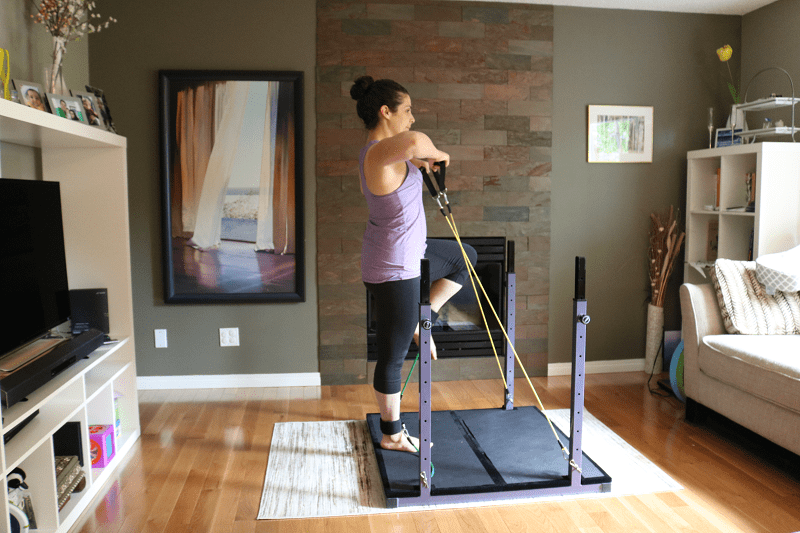
How Much Should You Exercise | If You Break It Down, Not Very Much!
We know you know exercise is important, that's obvious. But, not everything about exercise is. Questions about how much time you should be investing into exercise commonly come up. Questions like: "how much exercise do I need?" and "how long should my workouts be?" are commonly asked.
First, let's just say that there is no right answer. It'll be very case dependent and differ from person to person. This will guide you in the right direction and help you understand how much time you need to dedicate to exercise.
A Good Place to Start
According to the World Health Organization: "Adults aged 18–64 should do at least 150 minutes of moderate-intensity aerobic physical activity throughout the week or do at least 75 minutes of vigorous-intensity aerobic physical activity throughout the week or an equivalent combination of moderate- and vigorous-intensity activity." (Source)
While this is a good place to start, it's not very helpful without understanding what some of these terms mean. Let's quickly define them.
Aerobic - requiring oxygen (as opposed to anaerobic which means without oxygen)
Physical Activity - any movement of the body that requires energy
Moderate-Intensity - a level of activity that requires effort but you're still able to talk (it may be difficult); your heart rate and breath will be elevated
Vigorous-Intensity - a level of activity that requires a lot of effort and you're struggling to talk; your heart rate and breath will be very fast

A Few Things to Consider
When we're considering a healthy lifestyle, physical activity definitely has an important role to play; read this blog if you want to learn more about the benefits of physical activity.
The problem is, when we hear the guidelines set out by the World Health Organization, many of us get intimidated. As a result, we focus on the "150 minutes" and convince ourselves that we have to figure out how to find time for 150 minutes of exercise a week.
But, by the definitions above, we're after 150 minutes of physical activity which includes walking, jogging, going up the stairs, running, and of course, exercise. Also, depending on where you are in your fitness journey, your definition of moderate and vigorous will differ from your neighbor's.
For instance, for one person, a fast walk might be moderate. But for another, it is nothing but a warm up.
There is no right answer!
The best way to monitor where you are on the intensity scale is to monitor your breath, heart rate, and ability to talk.
Let's Break Down "150 Minutes"
To put this into perspective, let's assume that outside of the time you dedicate to physical activity you are absolutely sedentary. In other words, you do nothing throughout your day to push yourself into that moderate - vigorous intensity zones. This is unlikely but will paint a clear picture.
Spreading 150 minutes over the week:
- 1 session of 150 minutes
- 2 sessions of 75 minutes
- 3 sessions of 50 minutes
- 4 sessions of 37.5 minutes
- 5 sessions of 30 minutes
- 6 sessions of 25 minutes
- 7 sessions of 21.5 minutes
or some other combination; i.e. 3 sessions of 30 minutes and 3 sessions of 20 minutes.
The truth is, not everybody can or wants to dedicate this much time to physical activity. As a result, they get discouraged and don't dedicate any time at all.
Does this sound like you?
If so, don't be discouraged.
Let's Paint a Better Picture
What was laid out above is the absolute worst case scenario. If you're the average person, you chase your kids around, run from meeting to meeting, walk up flights of stairs, and do chores. Therefore, you're further along than you think. These activities count for something!
Unless you're coming straight home from your desk job and heading straight to your couch, you're getting some form of activity. No, I'm not trying to let you off easy. I'm trying to paint a more optimistic picture for you.
Let's say through your average day you get in 10 minutes of unplanned physical activity, that works out to be 70 minutes a week. This only leaves you with 80 (150 subtract 70) minutes of physical activity that you have to plan for!
- 1 session of 80 minutes
- 2 sessions of 40 minutes
- 3 sessions of 26.5 minutes
- 4 sessions of 20 minutes
- 5 sessions of 16 minutes
- 6 sessions of 13.5 minutes
- 7 sessions of 11.5 minutes
MUCH more maneageable, right?
So, How Much Should You Exercise?
Now that it looks more manageable, let's figure out how many sessions you need and how long each session should be. As mentioned above, running, jogging, etc., all qualify as physical activity. Here at EvolutionVN, we advocate for home exercise because it's the most accessible and convenient. Therefore, you can quickly get your dose of physical activity and then back on with your day.
"How much should you exercise?", "how long should your workouts be?", "how many days a week should you exercise?", are really parts of the same question.
Let's address them all.
We don't want you doing any math. So here's a simple calculator to help you figure out how long your workouts should be.
Can You Exercise Too Much?
Before we show you examples of quick and effective workouts, let's address another common question. This time we're heading in the opposite direction.
Can you exercise too much?
Unfortunately, there's no straight forward answer here. Exercise (physical activity in general) has a huge role to play in your health, this much is clear. But, can too much of a good thing be bad? Let's start by making a few generalizations. Most of us don't need to worry about this. Whenever you can squeeze in a session of exercise, do it! However, there are some amongst us who love exercise and find themselves working out for several hours a week.
If you're one of these people and you're wondering if you're exercising too much, the answer is you have to listen to your body and watch for obvious signs. Your body will tell you if you're start taking it too far. Here are some common signs that you need to exercise less:
- your muscles are excessively sore for a long time
- you suffer overuse injuries
- your performance starts to decrease
- you keep getting sick
- you are irritable and agitated
- you lose weight unintentionally
- you start to develop a negative relationship with exercise
If you start experiencing some of these symptoms, monitor them. You don't have to stop completely but slow it down, reduce intensity, and take longer rests. And, the truth is, it can't hurt to take a break from exercise once in a while. You have a lifetime ahead of you to exercise. As a result, you'll come back rested and stronger than ever.
5 Quick and Effective Workouts
You want your workouts to be quick and effective. Below are 5 options that will give you the best bang for your buck. These workouts will incorporate exercises which require full body movement or use your biggest muscles. If you want to do exercises like biceps curls, feel free to add them to the end.
These workouts are designed to be 3 sets - 15 minutes long. So, depending on your results above, feel free to modify the workouts by adding or subtracting sets. For instance, add another set for 20 minutes, 2 sets for 25 minutes, and so on.










Remember, the guidelines provided by the World Health Organization are exactly that! They're guidelines. A lot of factors go into determining what is right for YOU. Moderate- and vigorous-intensity means something different for everyone. While you're doing these workouts, you can give yourself a healthy mix of moderate- and vigorous-intensity by:
- adding/reducing resistance
- adding/reducing assistance
- modifying pace(speed)
- increasing/decreasing rest between exercises
- increasing/decreasing rest between sets
Now that you have a clearer (more realistic) picture, go get it done!
All of the exercises demonstrated above were done on an Evolution Training System. If you don't have an Evolution, you can do a variation of these exercises by anchoring (attaching) your bands to a solid foundation. To learn more about the Evolution or get your own, click here. To see more exercises you can do on the Evolution, head to our exercise library.
Are you curious why we love resistance bands? Click here.
If you need more support, reach out at hello@evolutionVN.com